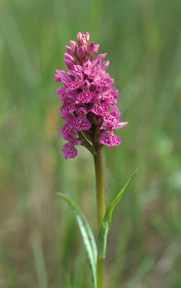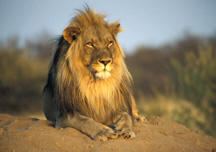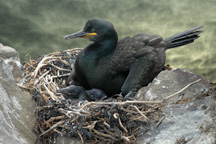
NATURE PHOTOGRAPHY HOME & ABROAD
Defined by the Photographic Society of America as “All of branches of natural history except Anthropology & Archeology so that a well-informed person will be able to identify the subject & certify to its honest presentation”; Nature photography is a well-established theme. Subjects can range from birds, bugs, butterflies, animals, plants, trees & the elements themselves. Many exhibitions have more than one section, and those that do invariably include a nature category.
Some of us travel the world in search of nature pictures & exhibitions abound with excellent examples of exotic creatures from the four corners of the planet. However rich pickings can also be found when “on safari” in the back garden and local woods.

Common Spotted Orchid
Photographed in soft natural light using a 90mm macro lens with the camera on a heavy tripod.
Avoiding cluttered foregrounds & backgrounds was important, as was a fairly small aperture (f16) to ensure sharpness
Such a safari can unearth many fascinating subjects, many in the form of small creatures or plants that need to be photographed from a distance of between 4 & 6 inches. This requires some sort of close focus arrangement, such as macro lens or filter. Although a filter will not give the same quality as a lens it is considerably cheaper, if someone wishes test their interest in this type of photography before making a major investment. One combination that provides first class results, in flat field subjects, is a bellows unit fitted with an enlarger lens.
A heavy tripod is essential to ensure stability when using slow to medium speed film & allows a greater choice of shutter speeds. Failing that, a gate or fencepost can be used if one is handily placed & a beanbag is very useful when photographing from a vehicle.
Reflectors or a balanced flash combination, of a main light with a fill in, can prove very valuable accessories to provide sufficient natural looking light. In nature work it is best to try & avoid well-lit foreground subjects with jet-black backgrounds. Although never discount any combination, be prepared to experiment and if it looks right give it a go.
The ultimate aim is to capture a subject that looks naturally lit, in its normal surroundings, with a story telling element in a well-balanced composition. Sounds easy doesn’t it!

Male Lion
Namibia, photographed with a 500mm lens at 6.15am.
Modern day nature photographers can be seen as akin to the big game hunters of old. Both dress in subdued clothing & stalk their prey carefully & quietly, exercising great patience until the time is right to shoot. At this stage they part company & the camera replaces the gun. A romantic notion possibly but at the end of the day everyone is happy & hopefully still alive.
In some game reserves or national parks it is forbidden to leave your vehicle, and quite rightly, so for personal safety and to protect the animals. In these situations the most important accessory to carry is a beanbag. A canvas bag measuring 8 inches by 6 inches with a Velcro seal on one side and filled with beans, rice or peas will provide a very stable resting-place for a camera and lens when wedged against the open window frame of a car door.
In these days of strict weight restrictions on hand luggage on flights the secret is to take the beanbag empty and purchase the beans locally. They can then be discarded before the flight home.
As in most branches of photography the key to success is patience and perseverance. Waterholes are good places to observe and photograph animals. Be prepared to rise early and be in place as day breaks. The light will be at its best early or late in the day and animals being intelligent will move around when it is cooler. Watch carefully as the animals approach the waterhole and be ready to capture that elusive moment that records something just that little bit different and helps tell a story.
What speed of film to use is always an important consideration? A good quality 100 ASA transparency film supported by a 400 ASA for lower lighting conditions is more than adequate to capture most subjects. Although the quality of 400 ASA film has improved significantly over the last few years, I still prefer to use 100 ASA as first choice and revert to 400 ASA on a needs basis.
My camera equipment consists of a 35mm SLR camera with a 90mm macro lens, a 28-200 zoom and a 500mm long lens. I find this combination flexible and most useful for a wide range of subjects.

Shag at Nest with Young
Taken on the Farne Islands. A 200mm lens was used, supported on a monopod.
Nature photography opportunities nearer to home are many & varied. Living in the north of England, places near by include the Farne Islands off the North East Coast, famous for their breeding birds such as Puffins Gannets and Terns. Edinburgh, within a two-hour drive, has a well-known butterfly farm, as well as a zoo. Wildfowl parks and Royal Society for the Preservation of Birds reserves are dotted all over the country. Specialist reserves such, as those for otters are becoming increasingly popular.
No matter where you live many suitable locations will exist within easy travelling distance. Groundwork is very important in any branch of photography and the Nature category is no different. Spend some time on research to establish when and where subjects will be available. Visit sites on more than one occasion at different times of the day.
I find that a good way of producing work is to set yourself a project with a clear objective & a timescale. It focuses your attention & gets you out with a camera. A good example would be “to photograph plants or fungi in the local wood over the next 6 weeks & produce a panel of say 6 slides or prints”.
One final very important point if you enter exhibitions always read the rules carefully. If your slides are genuine wildlife don’t forget to mark them with a “W” on the entry form, failure to do so could prevent you from winning the best wildlife award. If there is any doubt the selectors must reject the slide from that particular category.
I hope this short article has raised some useful points & provided food for thought. Good luck with your nature work.
Home About Articles Gallery Contact Prints Links